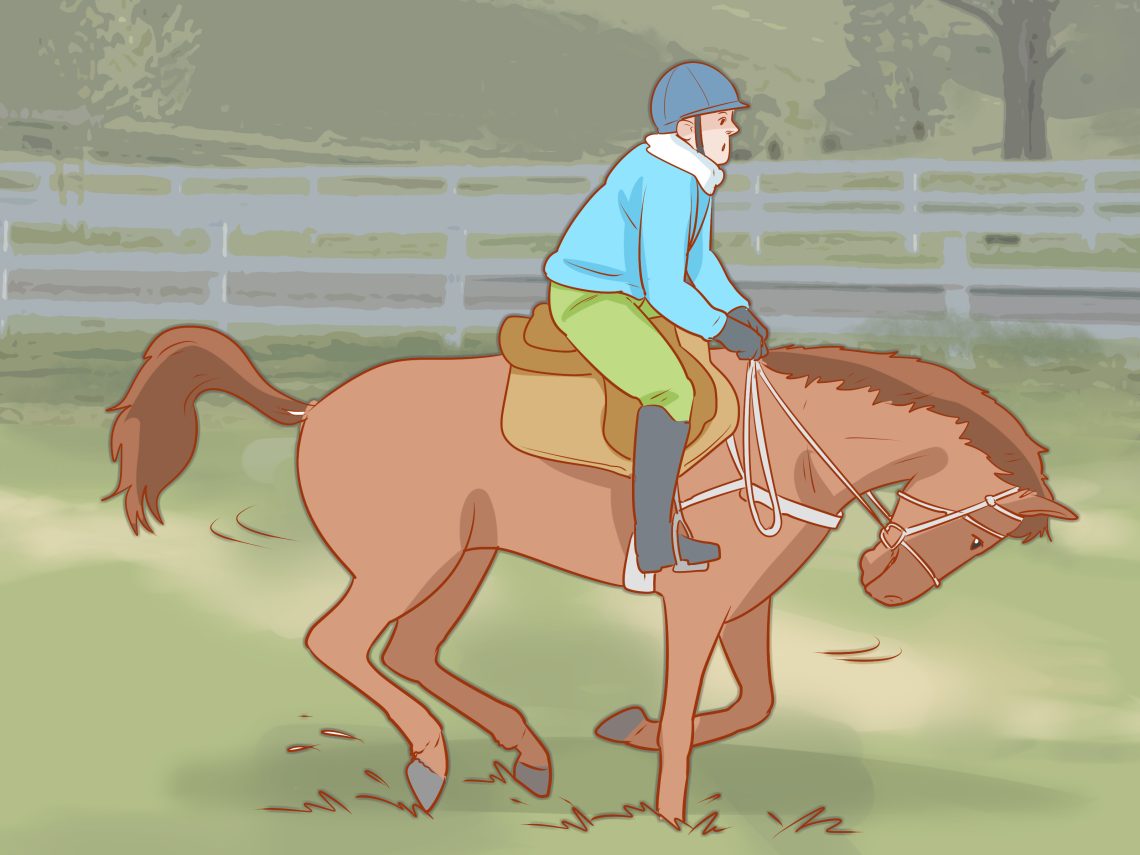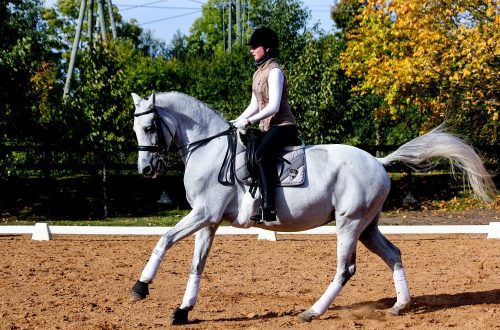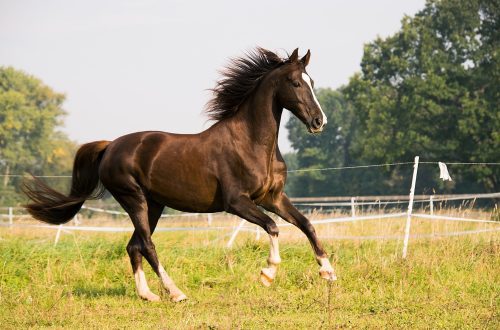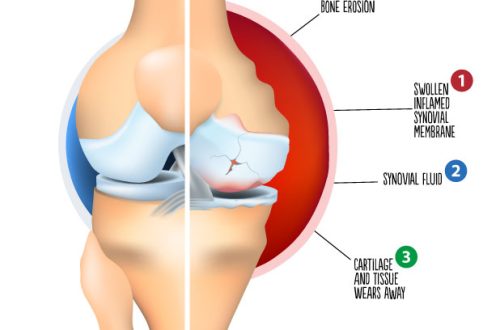
There are no ups without downs. What is the right way to fall off a horse?
Falling and Rolling: Working on Safe Falls
I wonder how many falls from horses I have seen in my life? Far beyond a thousand. Most of them went according to the following scenario: an unexpected fall, brushing dirt from clothes, sometimes wiping tears and getting back into the saddle, continuing training. But many times everything ended differently – fractures, serious injuries and sometimes even death … Once I watched with my own eyes how a fall that began like a comedy almost ended in tragedy.
It happened during a cross-country “clinic”, the usual one like all my “clinics”: the preparatory riders did a good job and followed my instructions exactly, the horses behaved perfectly. Everything went well. We worked on good soil, under a blue sky, the weather was comfortable, a light northwest wind was blowing. I remember thinking everything was going great.
While training, I noticed a young lady who was a model student of her type. She was timid but willing to try and demanded positive support rather than negative correction. The girl and her horse were slightly overweight. Her horse, Fat Man, knew much more about jumping than his rider. He was a horse with good momentum, capable of jumping anything the rider really (I emphasize the word “really”) wanted to jump.
The task was to jump a small log that lay between the rider and the rest of the group, then make a 90-degree turn and jump another log of the same size and shape, but now in the direction from the group. This gave me the opportunity to talk about proper controls in turns and teach riders how to think like a horse. I wanted them to feel how eagerly the horses jump towards the group, and how reluctantly they jump away from it.
This simple exercise, when done correctly and listening to your horse, can be learned a lot. It was especially relevant for our rider. Her Fatty jumped perfectly towards the group (ears pointed forward, the horse worked well in front). However, his enthusiasm waned when he had to move onto the log away from the group. In spite of several timid warnings from the rider, he stopped at the second log, leaned his chest against it and lowered his head and neck down.
Since the girl was ahead of the movement, she began to slowly slide down the horse’s neck towards the ground on the opposite side of the log. She tried to stop her fall by grabbing onto her neck, her chin resting on her chest. So far the situation has been pretty funny. Some of the spectators shouted “Hold on” and other words of encouragement. But then the comedy abruptly stopped. Realizing at last that she was destined to fall, the rider lifted her head to look at the ground and extended her arms to meet her. Now she did a handstand, her face looking down and her body almost completely upright. I suddenly realized that she had never been taught how to fall properly, and now she could break her neck or her back …
When she began to fall to the ground, she still tried to support herself on outstretched arms for some time, but the inexorable law of gravity gradually took over, and her arms buckled. Her entire mass now pressed her face against the grass, while her body and legs continued to rise above her head. The fat man chose this moment to rise from his kneeling position on the log, which pushed the rider a little and she began to fall on her side to the left. Her body did fall to the ground. The girl was badly shaken, but mostly unharmed. Most of the audience did not understand what a dangerous situation they were witnessing, but I made a note to myself to resume the lessons on a safe fall.
It can happen at any moment – be prepared
“There is not a single horse that cannot be ridden, and there is not a single rider who cannot be thrown out of the saddle.” This axiom attributed to William James, the famous cowboy of the early XNUMXth century, pretty much sums it all up: everyone wants to ride and no one wants to fall, but if you are in the saddle, you will fall sooner or later. And it’s about “when”, not “if”. It follows that if you ever fall, you need to learn how to fall in a way that prevents or minimizes injury. However, before I talk about how to fall, I must share with you the thought that runs through my head every time I write these from the line: you need to be physically ready! Fitness is your strongest defense against injury. It speeds up reaction time, improves balance and improves agility. Remember – fitness and fall training literally saved my life. I hope they do the same for you.
Your arena will be the perfect place to practice falls. At first, all you need is your helmet, safety vest, and clothes that you don’t mind getting dirty. Later, I want you to practice wearing tournament clothes to develop muscle memory so that your muscles remember your body’s behavior in it. If you consider yourself unusually timid and/or non-athletic, you may need help at first. Look for clubs where you can do gymnastics or martial arts. This will help you get started on your falls.
As when learning any new skill, everything should be built gradually, from simple to complex.
Stand straight on a soft surface, such as in your arena, with your feet shoulder-width apart. Cross your arms in front of your chest and drop to one knee. As your knee touches the ground, rotate your head, neck, and shoulders away from the direction of your “fall” so that your next point of contact with the ground is just behind your shoulder point. When your shoulder hits the ground, tighten your abdominal muscles, pull your knees up to your chest, roll onto your back, continue rolling, kneel, then to your feet. After a few workouts, you will be able to do a full roll and stand on your feet in the starting position. Be sure to roll at a 45-degree angle from where you landed. This way you will get out of the path of your horse and not get under the hooves. Falling right is fun, but your horse won’t step on you. (I know it’s not possible to fall feet down every time, but the sequence I just described is the safest way to start (!) learning to fall).
Try to fall both ways until you feel comfortable. At first, it will be easier for you to fall in one direction. Remember that you need to fall more often on the side that is more uncomfortable for you. Chances are you won’t always fall from your horse to your stronger side, so you need to be prepared for any situation.
This is a very good first attempt by Veronica (V) Saint Maurice. More practice, and V’s knees and elbows will be tighter against her body, she will be more grouped into a “ball”. This will help her roll and dissipate the energy of the fall, rather than “sticking” into the ground, applying the force of impact to one point.
Tips for a Safer Fall
Falling at speed
Once you’ve mastered a normal fall, learn how to confidently fall, roll, and get back on your feet in both directions from a standing position, add speed to the exercise.
I use ATVs and other small motorized vehicles for this purpose (they should be low and move slowly). Now you are practicing the same actions, but falling in motion. Ask the driver to drive in a straight line at walking speed, make sure he drives straight and looks ahead. (The driver will have a natural tendency to turn his head, which will cause him to turn the vehicle in your direction.) Look at where you will be falling, bend your knees when you hit the ground, curl up into a ball and roll away from the ATV. As you progress, you should roll at least once after falling and get back on your feet.
Once you’ve mastered the “fall-roll-back” challenge from a standing position, make the exercise more realistic by adding speed. As a general rule, when you fall, you will develop a certain speed and you should practice falling with increased momentum. Here I like going into the fall of Hillary Moses. Her eyes are on where she will land, her knees bent, ready to act as shock absorbers. However, there are further problems. Because Hillary doesn’t cross her arms tightly, she lands on her elbow. Here the conditions are controlled, but in a real situation, she risks breaking something. Having a vehicle moving at walk speed behind you is a good reminder that you need to roll away from your horse. In a perfect world, horses avoid stepping on people, but you’re not in a perfect world when you fall and you need to protect yourself. For safety, remind your driver to drive at walking speed and to stay in a straight line after you jump out.
Let me re-emphasize that while most of your falls won’t be upside down, this is the safest way to start learning how to fall and roll. Regardless of which part of your body hits the ground first, you will greatly reduce your chances of injury if you roll on the ground instead of focusing on one area of your body.
More fall strategies
The technique I just described will reduce your chances of getting injured during a fall due to slipping or falling over your horse’s shoulder. But we all know that there are other types of falls, and we need to discuss those as well.
If your horse slips and leaves in a turn, lean back from the direction of the fall and press down on the withers with your fingers. Use your hands to push yourself higher than your horse and raise your knee on the side that he is falling on. Your main concern is to prevent the horse from pinning your foot down on the ground, so be sure to pull your heel as close to your glute as possible. When your horse hits the ground, push yourself off of it and roll to the side. Roll as far as you can before getting up. You don’t know what your horse is doing after you and you need to leave the scene while you can.
Any kind of fall is potentially dangerous, but falling backwards is probably the most dangerous. That’s why I’m especially worried when riders ride glowing horses. If they lose their balance, they will land on you with their full weight. (Some horses have learned a false candle – a kind of levada, not very high, but enough to scare you and make you stop what you were doing, remove your leg – the horse uses this as a defense against the rider. These horses need to be corrected by specialists. They definitely not for you).
But horses glow and quite unexpectedly, and you should be prepared for this. If the horse steps on the candle, there is a moment when you can leave. As soon as you know the horse is getting ready to glow, he backs off, take the mane as far as you can, pull your body up and swing one leg over to jump off. You will most likely land awkwardly and fall over your hip. Immediately roll away from the place where you fell, no matter how awkward it looks, because there is a real chance that your horse is about to fall on you.
The riders I explained this technique to sometimes told me that it would work for me but not for them because I am an Olympian and they are not. My answer: I survived and became an Olympian only because I learned how to do it when I was 10 years old.
A few additional thoughts
· No method can prevent all injuries associated with riding and horses, but we must do our best to avoid or at least reduce the chances of injury.
Jim Wofford (source); пerevod Valeria Smirnova.
How to fall off a horse
When you cannot ignore the laws of gravity, there are some things you can do to minimize your risk of injury.
Everything was fine a moment ago. A tNow everyone is betting on whether you can stay in the saddle. Sounds in your headalarm bell. Everything is official. You fall off your horse.
As riders, we know that falling is inseparable from riding, no matter how experienced we are or how stable and reliable our horse is. The fall will still happen sooner or later.
Falls don’t just happen to riders in higher risk disciplines (eventing, show jumping, etc.). Riders fall both in the arena, and on the trail, and in the field. Many accidents happen in the stable because we tend to let our guard down or feel falsely safe in familiar surroundings.
According to the Fédération Equestre Internationale, about one in 250 top-level riders has experienced a rollover fall. The ratio for falls without a flip is even higher. If the fall ratio is so high among these experienced, well-trained and talented riders, then what about us regular riders?
But that doesn’t mean there’s nothing we can do but sit tight in the saddle and wait for the next fall. We can do a lot.
Landing
Wendy Murdoch, a coach from Virginia, was badly injured in a fall. After this incident, the doctors told her that she would no longer walk. Not reconciled, Murdoch was able to regain her mobility. Her teachings are based on the science of biomechanical movement and the anatomy of the horse and rider.
One of the best ways to increase your chances of staying in the saddle, or at least starting to fall less often, is to learn to ride softly and with balance, which allows our body to absorb the horse’s movement.
“Many Western riders believe that by holding on tight to the stirrups and holding on to the handle of the saddle, they will ride safely and steadily,” says Murdock. “For the same reason, English-style riders will pull the heel down, also resting on the stirrup.” Grabbing the sides of the horse with the knees or hips is another common defense mechanism.
The reality, however, is that this attitude makes us much less stable. “When you pinch a horse with some part of your body, you create a pivot point around which your body will spin if you lose balance,” explains Murdock.
Instead, we want to ride in a way that keeps the hip, knee, and ankle joints flexible and functional, not locked in one position.
Prepare
Murdoch highly recommends taking lessons that will help you learn how to ride with a balanced and supple fit. This will help you absorb the sudden changes in direction or speed that often precede a fall.
Any activity that can be used to work out falls in a safe environment will be useful. So, a number of methods by which riders can be taught to fall and roll back were invented by triathletes.
Preparation Tips
Ammunition check: Every time you get ready to ride, make sure that the girth is tightened and that the stirrups and bridles are in good condition.
Checking your own state: Pay attention to any warning signs you see or feel. Listen to the voice of reason telling you not to do something. Don’t give in to peer pressure and make sure you’re not tired or stressed before deciding to move on.
Equipment check: always use certified helmets, proper footwear and consider purchasing a safety vest.
During the fall
According to Danny Warrington, founder of the LandSafe Reducing Rider Risk Program, after our internal alarm sounds and before we hit the ground, we have about 500 milliseconds to think and react.
During this period of time, we can try to fall on soft dirt, and not on a hard boulder. We can fall so that the horse does not roll us over, falling from above.
Or, as the LandSafe program teaches, we can walk away from the horse and mitigate the effects of a fall and prevent serious injury.
Introduced in December 2016 at the annual meeting of the US Eventing Association, LandSafe was created by Warrington, a former steeple runner and triathlete, and his wife Keli, also an eventing athlete.
Beginning with a series of basic gymnastic moves and final falls from a specially designed mechanical horse, the eight-hour core program covers the three aspects of learning to fall.
Prepare: Riders place their hands in a position that will help them initiate the roll when they reach the ground.
Look: riders look beyond the danger area – where the eyes are directed, the body will follow.
roll: When riders hit the ground, the position of their arms and body initiates a roll that protects their head and neck.
The goal of the Warrington program is “teach riders to influence the outcome of a fall. By rolling out of a dangerous area and preparing the body to absorb and dissipate ground contact energy, riders can reduce the chance of injury.”
“When students overcome their fear of falling and replace it with actions they initiate, their overall riding confidence grows,” says Warrington.
This in turn can help reduce the chances of falling because riders already have a plan, they can control their response and they know what to expect. Fear of the unknown is replaced with knowledge that can lead to more efficient riding.
After the fall
Without trying to find the culprit, study the possible causes of the fall and learn a lesson that you can apply to your future riding.
While the events leading up to some falls happen too quickly and suddenly, in some cases problems can still be avoided (for example, falling due to ill-fitting ammunition). Check everything, protect yourself!
Make sure you take care of yourself. Feel free to contact your doctor. Relax for a few days.
Then plan your next ride. If you’ve lost confidence or become fearful, talk to your coach or sports psychologist. You may need to ride another horse that you can trust. She will help you get back on track.
Kara L. Stewart (source); пerevod Valeria Smirnova.





